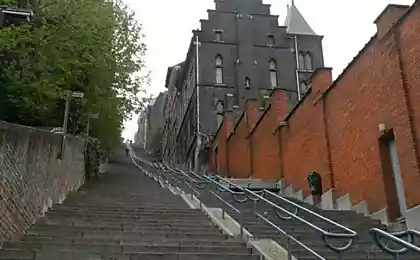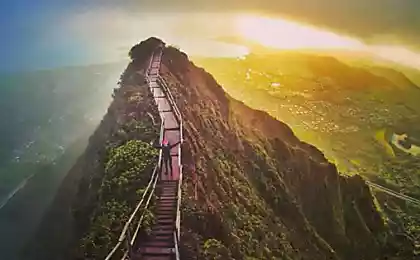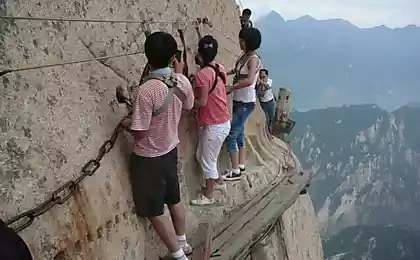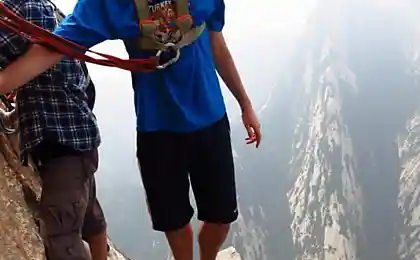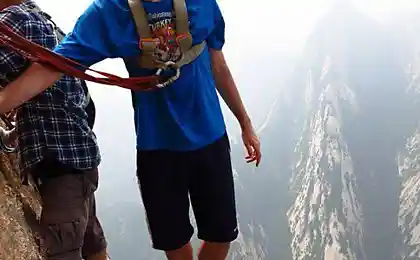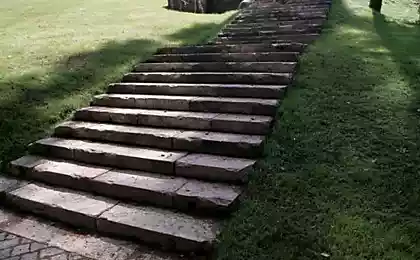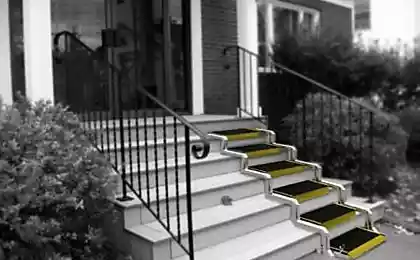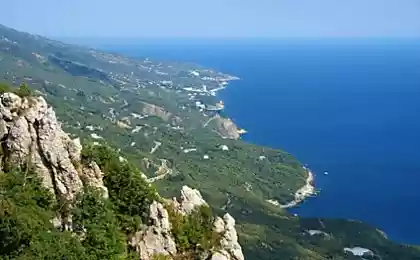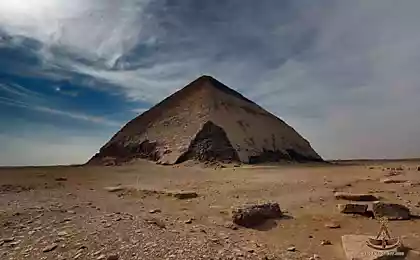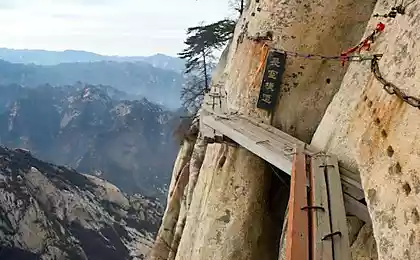532
Huashan - Stairway to Heaven
Hua Shan (Flower Mountain) is one of the eight sacred mountains of Taoism.
Millions of Chinese yearly pilgrimage to Hua Shan, to visit the temples built right on top of the cliffs and admire the dizzying beauty, opening the road.
Many people confuse Huashan and Huangshan. It sounds like, but it is clear the mountains are completely different) and the distance between them is 1,000 km.
16 photos via cyber3
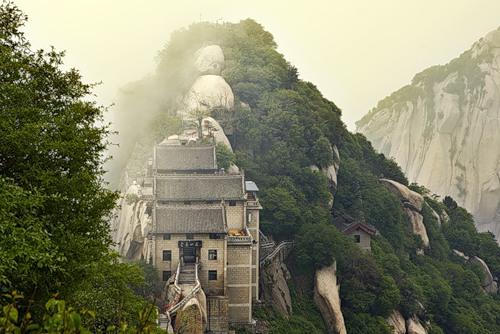
Entrance to the mountain begins in the Taoist temple. On the track is laid out a symbol of the unity of the Taoist yin and yang.
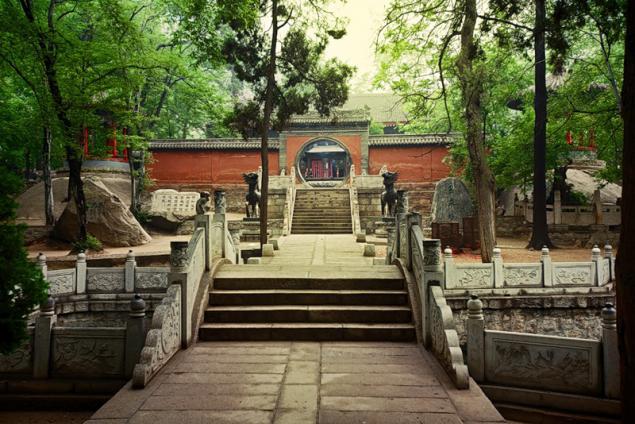
Most of the road rises in a continuous mist. Very nice, but a bit damp. On the one hand it is good that you do not want to drink, and the other hand is absolutely dry shirt and a halt quickly gets cold.
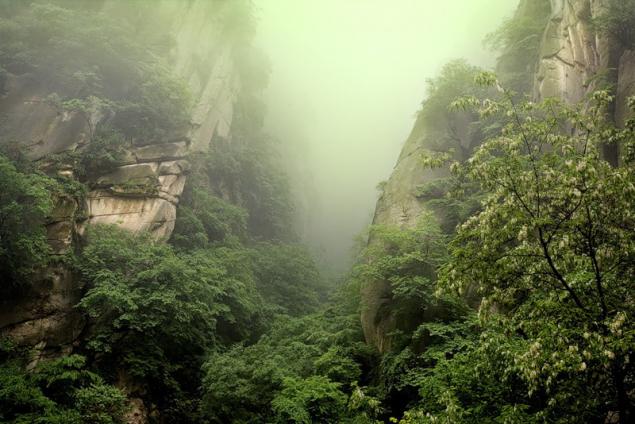
The road is very well appointed, first (about 4 km) stone path that goes up quite steeply, then steps with handrails or handrails instead of chains (about 2-3 km). Every worth 400-500m mark as completed. Every 300-400 meters there are stalls selling drinks and Chifa. After every 500 meters equipped with toilets.
Periodically, there are "points of interest". This is the place where every Chinese wants to leave a trace of themselves. Such places are easily identified by the red ribbon and locks (it seems this tradition has long been international).
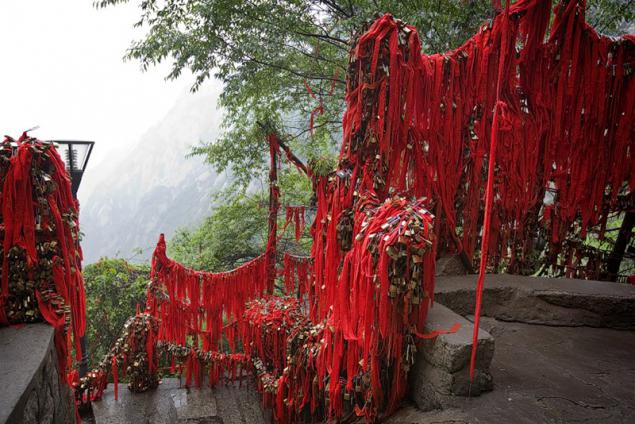
Since the second half of the way, I wanted to speak in verse:
"... And all the mountains above ...
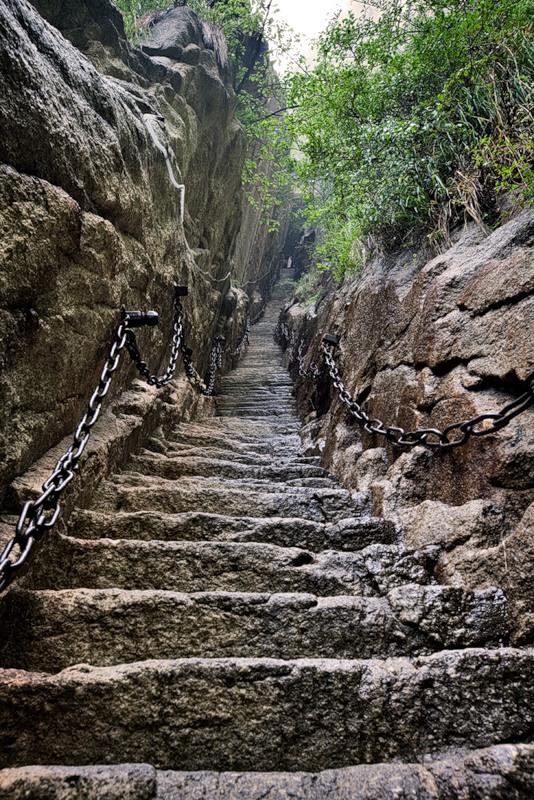
... And the mountains are steeper ...
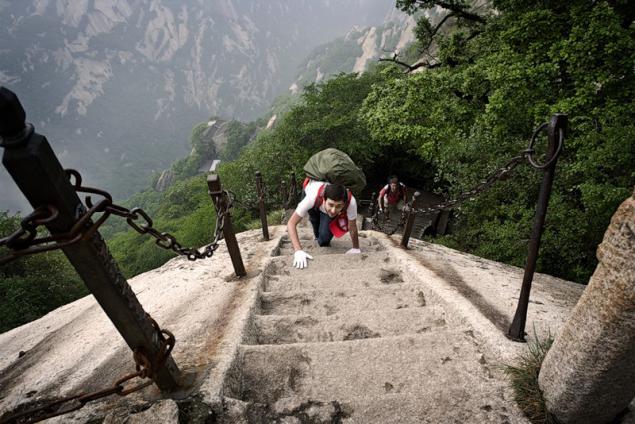
... And the best mountains under the clouds soar ... »
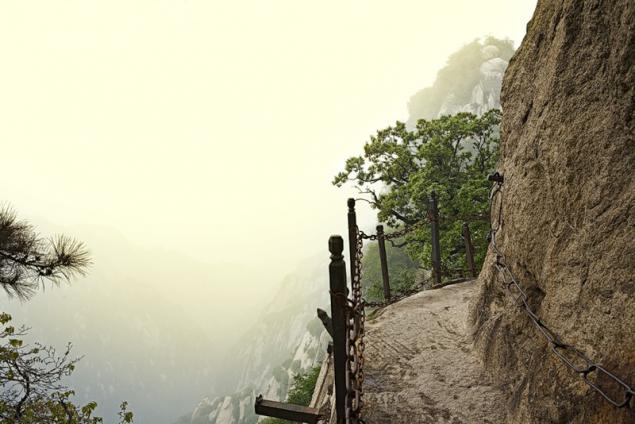
So we got to the northern peak. Here comes the cable car, so on weekends and holidays here very crowded.
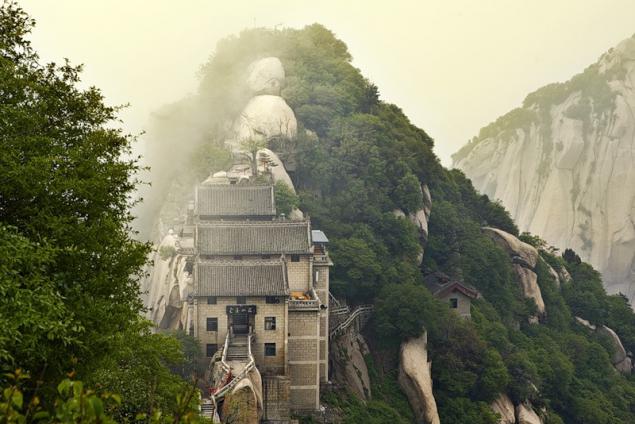
Photographed all 180 degrees, we moved on.
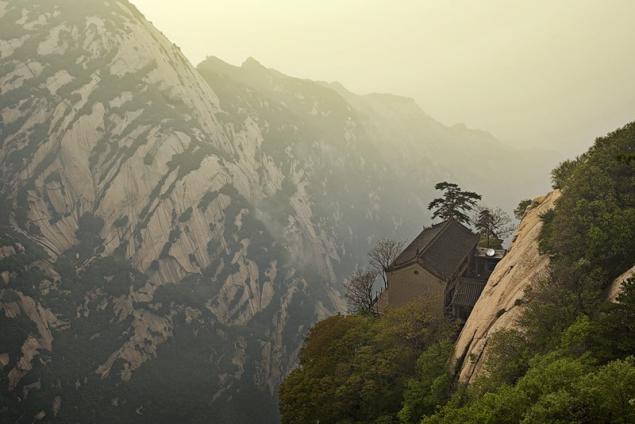
It is a pity that the photograph difficult to convey sensations experienced by standing at the edge of the cliff: excitement and fear at the same time!
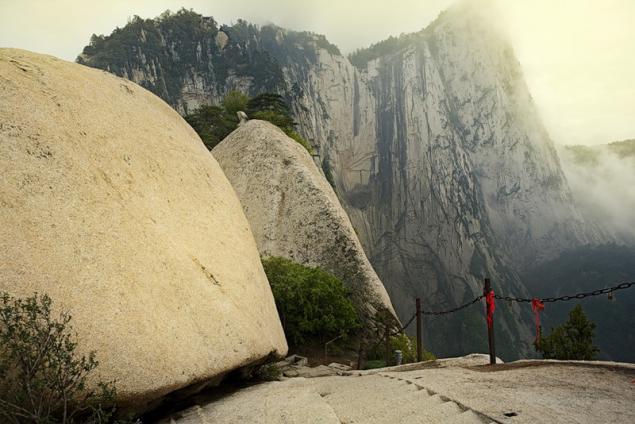
11
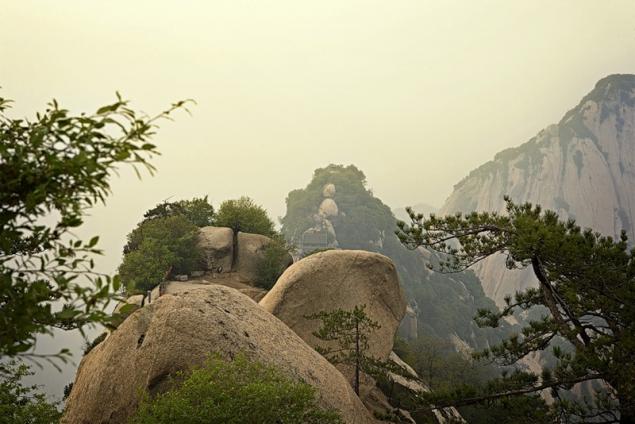
12
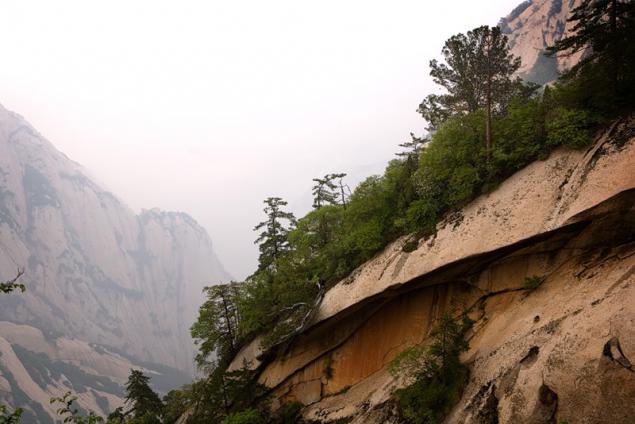
Meanwhile, stairs grew steeper and steeper ...
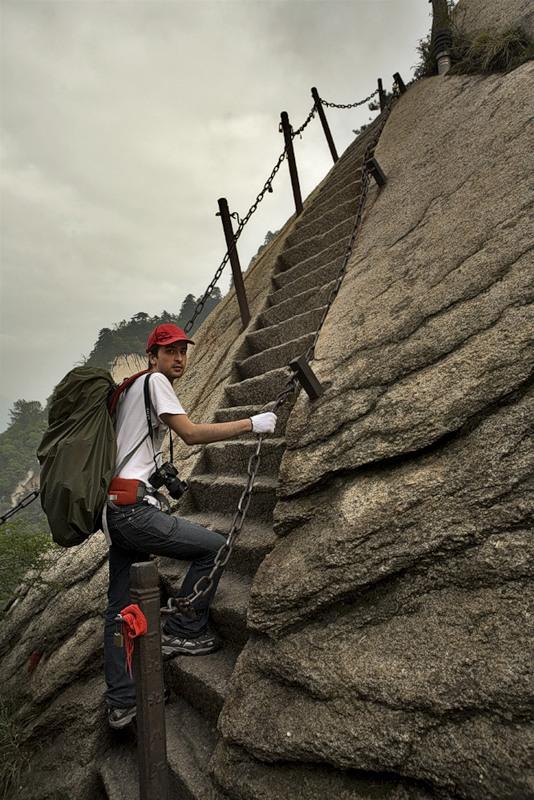
The finale of our ascent that day was climbing Blue Dragon Ridge (rib blue dragon).
This staircase going up steeply, with the right and left of an open break.
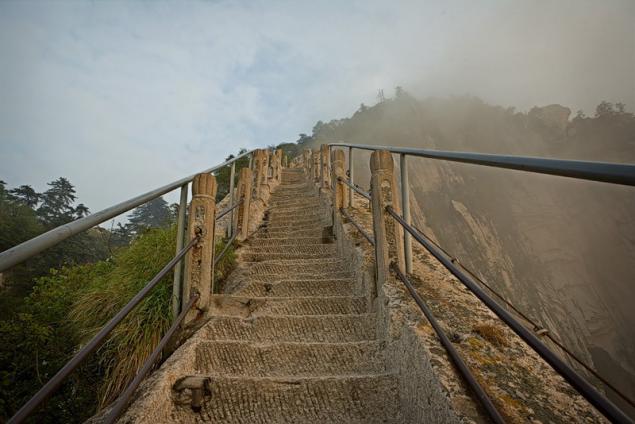
15
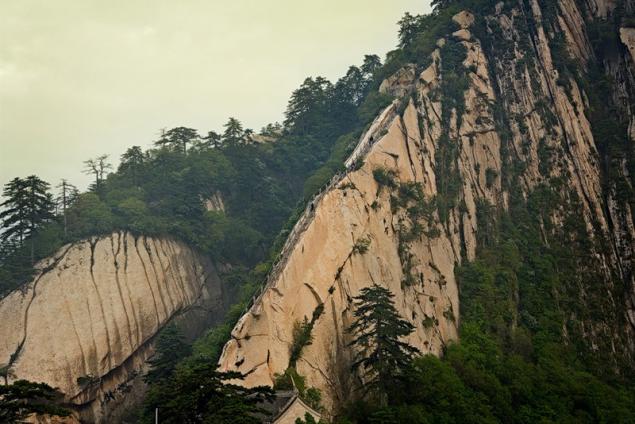
Clouds drifting right at your feet, make a note of unreality of what is happening.
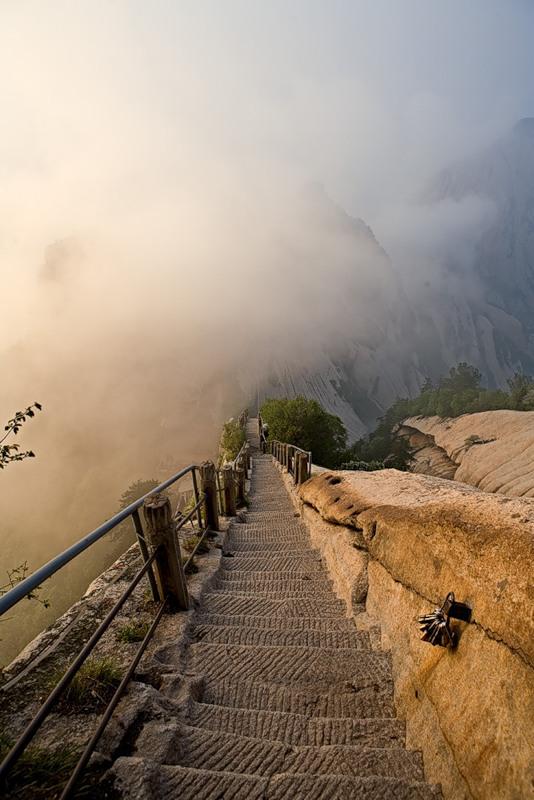
Source:
Millions of Chinese yearly pilgrimage to Hua Shan, to visit the temples built right on top of the cliffs and admire the dizzying beauty, opening the road.
Many people confuse Huashan and Huangshan. It sounds like, but it is clear the mountains are completely different) and the distance between them is 1,000 km.
16 photos via cyber3

Entrance to the mountain begins in the Taoist temple. On the track is laid out a symbol of the unity of the Taoist yin and yang.

Most of the road rises in a continuous mist. Very nice, but a bit damp. On the one hand it is good that you do not want to drink, and the other hand is absolutely dry shirt and a halt quickly gets cold.

The road is very well appointed, first (about 4 km) stone path that goes up quite steeply, then steps with handrails or handrails instead of chains (about 2-3 km). Every worth 400-500m mark as completed. Every 300-400 meters there are stalls selling drinks and Chifa. After every 500 meters equipped with toilets.
Periodically, there are "points of interest". This is the place where every Chinese wants to leave a trace of themselves. Such places are easily identified by the red ribbon and locks (it seems this tradition has long been international).

Since the second half of the way, I wanted to speak in verse:
"... And all the mountains above ...

... And the mountains are steeper ...

... And the best mountains under the clouds soar ... »

So we got to the northern peak. Here comes the cable car, so on weekends and holidays here very crowded.

Photographed all 180 degrees, we moved on.

It is a pity that the photograph difficult to convey sensations experienced by standing at the edge of the cliff: excitement and fear at the same time!

11

12

Meanwhile, stairs grew steeper and steeper ...

The finale of our ascent that day was climbing Blue Dragon Ridge (rib blue dragon).
This staircase going up steeply, with the right and left of an open break.

15

Clouds drifting right at your feet, make a note of unreality of what is happening.

Source:
